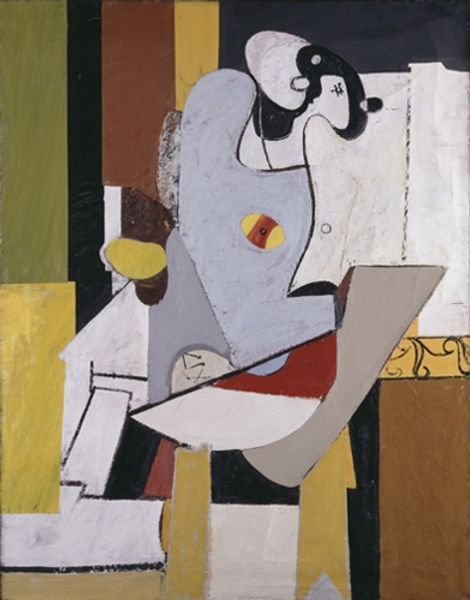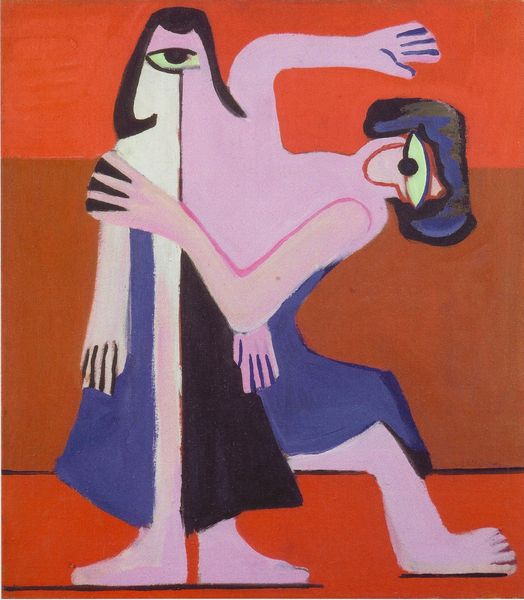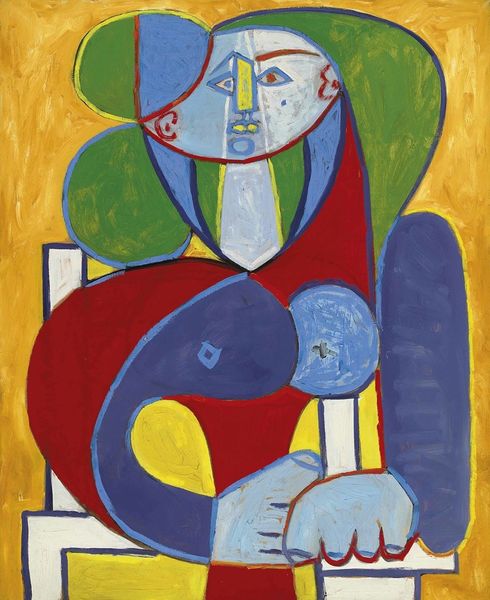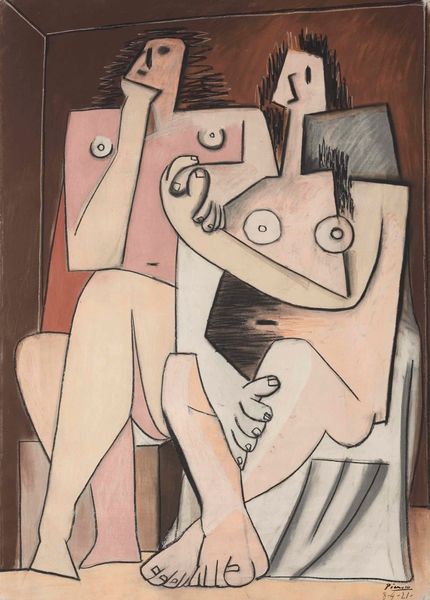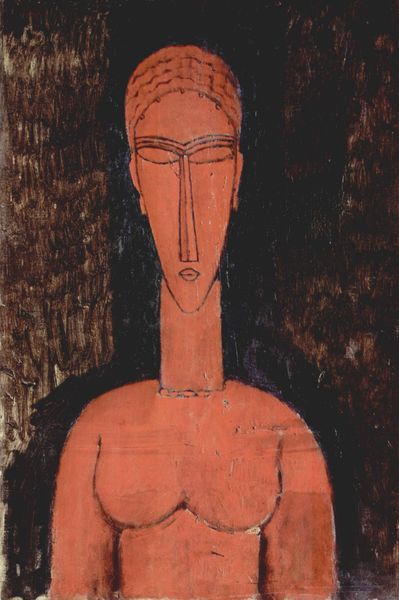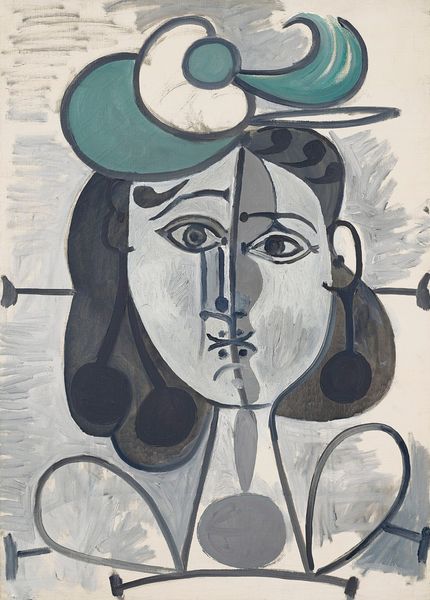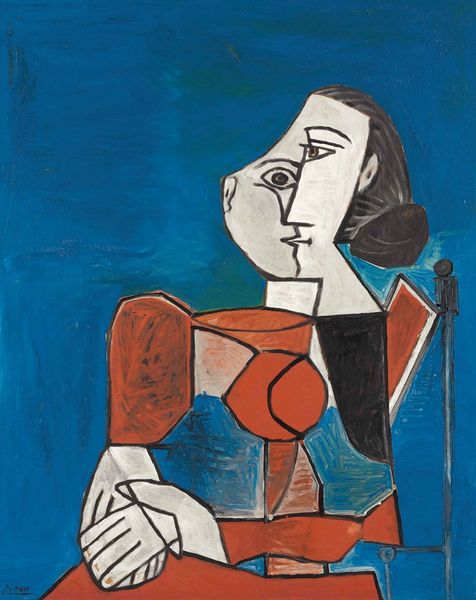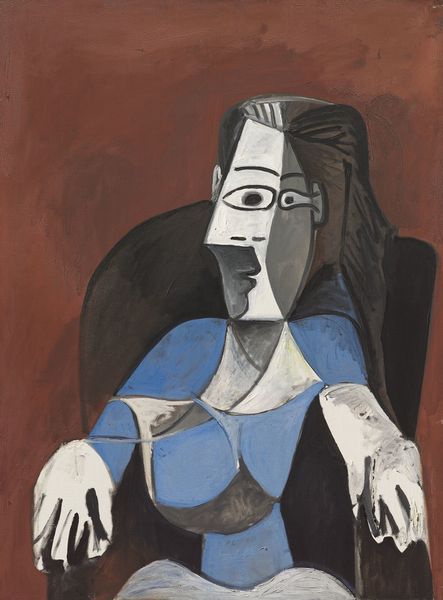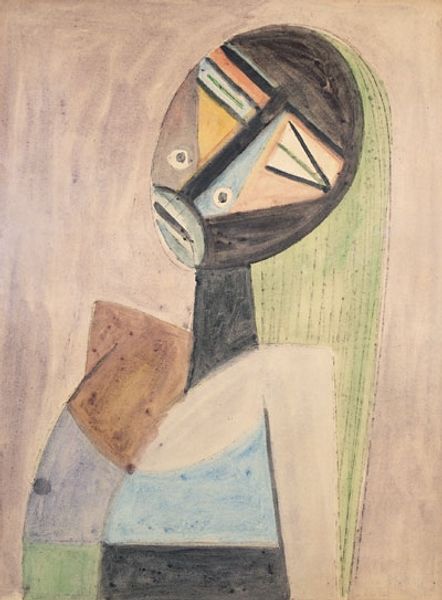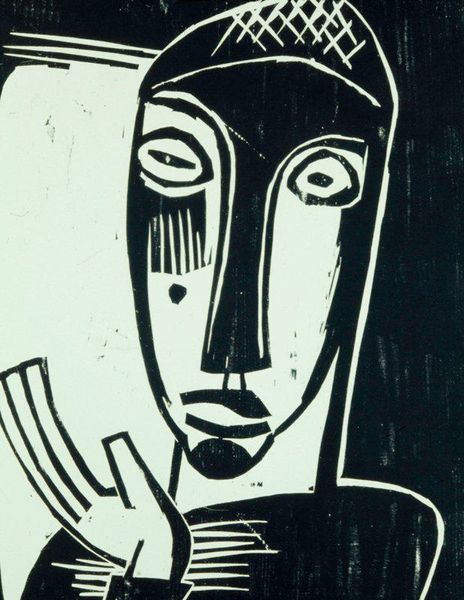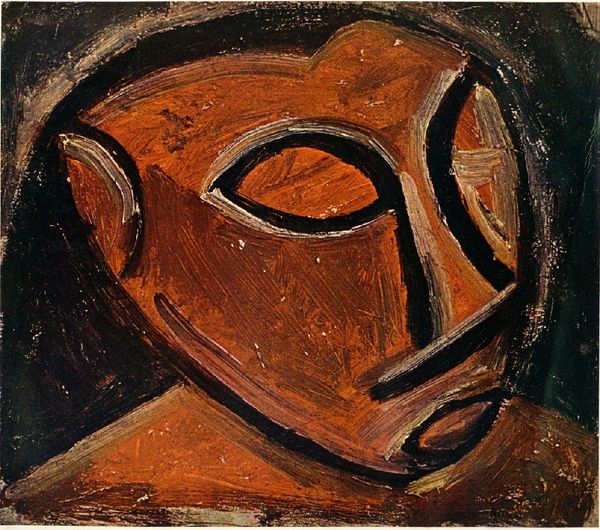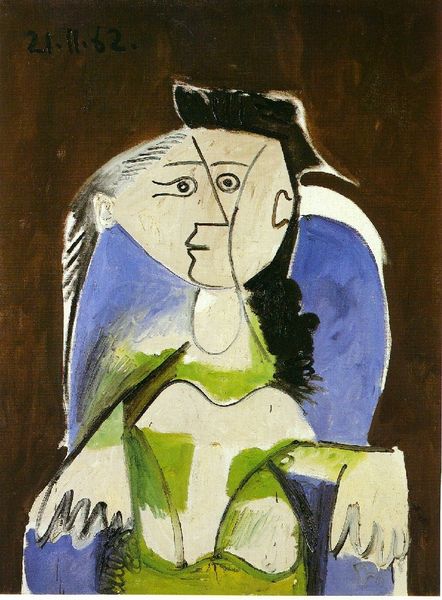
Copyright: Modern Artists: Artvee
Editor: This is "Nu les bras croisés," painted by Pablo Picasso in 1960. It’s an oil painting… the figure’s got these really intense, almost haunting eyes. What strikes me most is the raw, unsettling feeling I get from the stark lines and contrasting colors. How do you interpret this work? Art Historian: Indeed, there's a raw emotionality. The disfigured body with such bold color is fascinating. Consider that Picasso had already been an established, revolutionary force in the art world for decades when he painted this. His fracturing of the figure continues into new levels of Expressionism with a freedom to re-configure images he is known for. How might this painting echo traditional reclining nudes from art history, but with a modern sensibility and purpose? Editor: I see it now! I guess it plays with the tradition by distorting it, almost like he's acknowledging it, but also rejecting conventional beauty standards. Are the symbols he includes deliberate? What about the hands for example, they're massive in the overall composition... Art Historian: Precisely. The size of the hands is powerful, reminiscent of fertility figures. It’s an element of psychological drama; an inner anxiety that manifests on the exterior through distorted bodily proportions. Picasso may be channeling subconscious anxieties or frustrations of identity and physical decline. Do you recognize the two different points of view depicted in this artwork? What effect is he having through these different view points? Editor: Yes, the multiple perspectives! One side of the face is presented straight on while the other is in profile…it’s disorienting. It reflects a deeper kind of fractured identity...seeing oneself differently than how one is perceived. Art Historian: I think that’s insightful. Remember that visual symbols operate beyond conscious intention, often tapping into our shared cultural reservoir. Reflecting on the cultural memory, you might find continuity between archaic symbolism and Picasso's personal visual language. I wonder about it. Editor: I'm beginning to think that he’s digging into something profound about the self. It makes you consider how we perform identity and confront aging… so much packed into this one painting! Art Historian: Exactly. And it's why art, even when unsettling, remains such a vital reflection of what it means to be human.
Comments
No comments
Be the first to comment and join the conversation on the ultimate creative platform.
